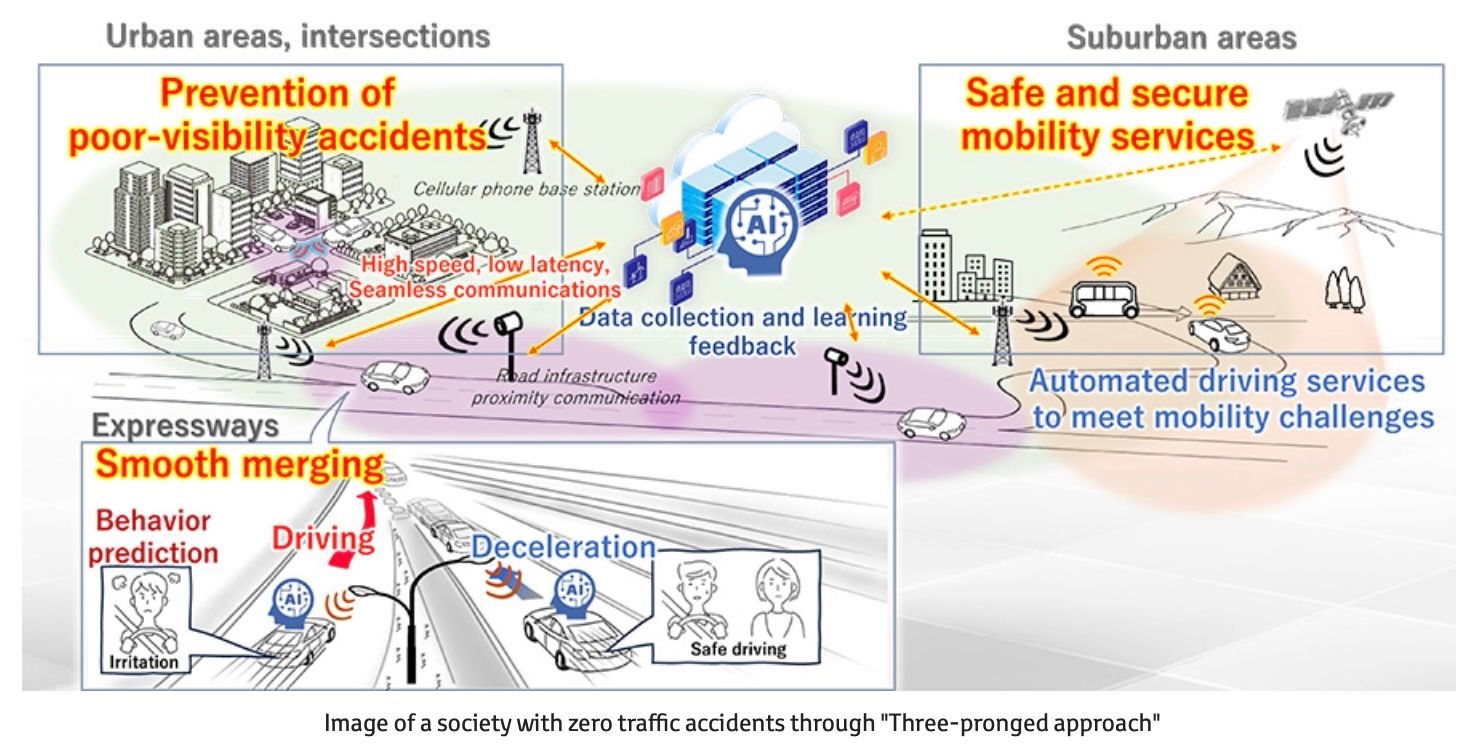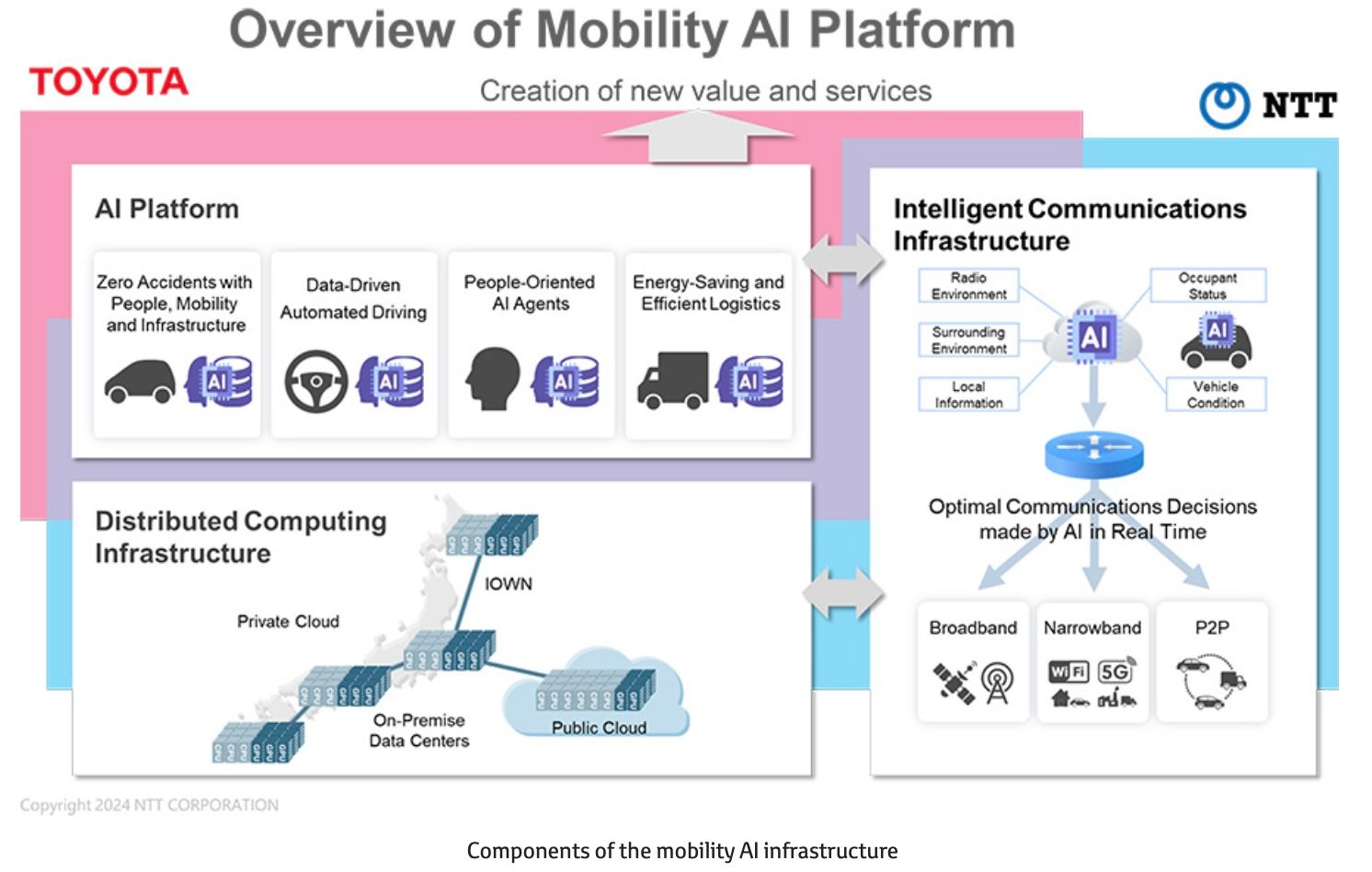Toyota City, Japan, Oct 31, 2024 - (JCN Newswire) - Today, Toyota Motor Corporation (hereafter, Toyota) and Nippon Telegraph and Telephone Corporation (hereafter, NTT) have agreed to a joint initiative in the field of mobility and AI/telecommunications with the aim of realizing a society with zero traffic accidents.
Through their previous collaborations, the two companies have confirmed that they share common values, such as contributing to society through technological and industrial development, a people-centered approach, and global contributions that start in Japan. This time, they will further deepen their collaboration with the aim of achieving a "society with zero traffic accidents" as the first step towards realizing a prosperous mobility society where safety and freedom are in harmony.
In order to achieve a society with zero traffic accidents, it is necessary to take an infrastructure-cooperative approach that constantly connects people, mobility and infrastructure, in addition to the advancement of driving support technology based on data-driven technology in cars and the development of future automated driving technology.
To achieve both of these things, Toyota is developing Software Defined Vehicles (SDV) with safety and security as the top priority. Alongside the evolution of SDV, it will become more important to build infrastructure such as a high-speed, high-quality communication infrastructure, an AI infrastructure that can collect and intelligently process vast amounts of information, and a computing infrastructure.
In this collaboration, NTT, whose strengths lie in the telecommunications, and Toyota will jointly build a "Mobility AI Platform" that combines a seamless communications infrastructure with AI and computing platforms that can intelligently process large amounts of data. By doing so, they aim to connect people, mobility, and infrastructure to realize a safe, secure, and sustainable mobility society with no traffic accidents.
Details of the joint initiative
We will jointly develop and operate the "Mobility AI Platform" and use it in our efforts(1) to achieve a society with zero traffic accidents. The Mobility AI Platform is made up of multiple elements(2).
The Mobility AI Platform aims to standardize the mobility field, and we envision that it will be used not only by the two companies, but also by a wide range of industry, government, and academic partners who share the goal of realizing a society with zero traffic accidents.
Through this initiative, the two companies expect to invest a total of 500 billion yen by 2030. Starting in 2025, they will begin development of the Mobility AI Platform, and from around 2028 under the three-pronged infrastructure, they will begin social implementation and collaboration with various partners, aiming for widespread adoption from 2030 onwards.
(1) Main initiatives aimed at achieving a society with zero traffic accidents
- Three-pronged infrastructure collaboration" to prevent collisions at blind intersections, etc.
- Development of advanced driving support/future automated driving systems" that are data-driven, with AI learning on its own based on large amounts of driving data

(2) Elements that make up the mobility AI platform
1. Distributed computing platform (data center)
Computing resources (data centers) for analyzing and processing vast amounts of data using AI are installed in distributed locations, utilizing IOWN's optical communication technology. By locating them in areas rich in renewable energy, we can achieve local production for local consumption of electricity, and by achieving high power efficiency in the coordination and processing of distributed computing resources and AI, we can promote the greening of the vast amounts of electricity needed for data analysis and processing.
2. Intelligent communication infrastructure
A system is being built to coordinate human mobility infrastructure through seamless communication that is suitable for various traffic environments and conditions in urban areas, rural areas, and suburbs. In addition to being highly reliable, it also achieves low-latency communication for large volumes of data.
3. AI infrastructure
A platform that achieves mobility AI that learns and infers from various data from human mobility infrastructure, based on a "distributed computing infrastructure (data center)" and "intelligent communication infrastructure".

Topic: Press release summary
Source: Toyota Motor Corporation
Sectors: Automotive
http://www.acnnewswire.com
From the Asia Corporate News Network
Copyright © 2025 ACN Newswire. All rights reserved. A division of Asia Corporate News Network.
|